 With a high-end feature set offering auto, scene, aperture and shutter priority modes plus full manual exposure controls, Panasonic’s beautifully sculpted 8 megapixel LX1 is clearly aimed at the discerning photographer who knows their ISO from their f-stop.
With a high-end feature set offering auto, scene, aperture and shutter priority modes plus full manual exposure controls, Panasonic’s beautifully sculpted 8 megapixel LX1 is clearly aimed at the discerning photographer who knows their ISO from their f-stop.
The camera – available in silver or black – is the world’s first compact camera to offer a panoramic 16:9 ratio CCD sensor -perfect for displaying on widescreen TVs – as well as 4:3 and 3:2 shooting ratios.
Despite its traditional appearance, the LX1 provides a class-leading level of control for digital photographers who like to wear the trousers when it comes to exposure (if you, err, get what we mean).
 On most compact digcams, exposure adjustments are invariably achieved by fiddly excursions through endless sub-menus, but the LX1’s design affords fast, direct access to a host of vital functions like ISO rating, shutter speed, aperture and file size/quality – essential for those looking to capture the ‘decisive moment’.
On most compact digcams, exposure adjustments are invariably achieved by fiddly excursions through endless sub-menus, but the LX1’s design affords fast, direct access to a host of vital functions like ISO rating, shutter speed, aperture and file size/quality – essential for those looking to capture the ‘decisive moment’.
Aspect ratios
Most digicams use sensors with a 4:3 aspect ratio (similar to a standard TV), but the LX1 lets you choose between three different picture shapes; 16:9, 3:2 (print size) and 4:3.
 Although some cameras mimic a 16:9 shooting ratio by cropping off the top and bottom of the picture, the LX1 has a true 16:9 sensor, with users able to switch formats via a handy switch on the lens barrel (no sub-menu burrowing needed).
Although some cameras mimic a 16:9 shooting ratio by cropping off the top and bottom of the picture, the LX1 has a true 16:9 sensor, with users able to switch formats via a handy switch on the lens barrel (no sub-menu burrowing needed).
We grew to love the vast, cinema-like sweep of pictures recorded in 16:9 – so much so that photos taken on other digicams looked positively cramped in comparison.
Images came out pin-sharp courtesy of the Leica branded 28-112mm (equiv.), offering a bright F2.8 at the wideangle setting, dropping down to a less impressive F4.9 at the telephoto end.
It’s worth noting that you lose the extreme wideangle when you switch to the more conventional 4:3 or 3:2 modes, which offer a 34-136mm zoom range.
At the back of the camera, there’s a large, bright 207,000 pixel, 2.5-inch LCD screen with a near lag-free refresh rate. We had no problems seeing what was going on in all but the brightest of sunlight, but an optical viewfinder would have been a handy addition.
 Camera controls
Camera controls
The main controls to the right of the LCD were simple and easy to use, and we had no problems navigating the menus using the four-way controller.
A smaller multi-directional ‘joystick’ lets you adjust aperture and shutter speeds in the relevant modes, as well as set manual focus.
Pressing the joystick brings up a convenient ‘quick menu’ for changing common shooting options like ISO, white balance etc – a great example of the photographer-led usability that sets this camera apart from the pack.
Panasonic did blot their copybook slightly however, with a few poor translations in their sub-menus – not what you expect from a top of the range camera.
 Photographic modes
Photographic modes
Along with the enthusiast-pleasing manual, aperture and shutter priority exposure modes, there’s a host of auto scene modes covering just about every photographic eventuality we can think of. These include portrait, sports, food, scenery, night scenery, self-portrait, night portrait and a rather curious ‘baby’ option.
In use, we found the LX1 to be very responsive, with impressively fast focusing, shutter lag and shot-to-shot times.
Exposure was spot on more or less every time, with the camera delivering stunning resolution, razor-sharp images stuffed full of detail.
The control layout proved intuitive and a pleasure to use, and we’d go as far as to say that this is the best handling compact digital camera we’ve ever come across – not only does the LX1 look great, it feels great to use too!
In fact, we found ourselves taking more pictures with the LX1 than any other camera on the desk, with its extensive range of features encouraging creativity and experimentation.
Flawed gem
The Lumix was on track to being our perfect camera, until we found a veritable swarm of bluebottles appearing in the ointment when the sun went down.
We’re talking high ISO image noise. Tons of it.
Even at 80 and 100 ISO there’s more noise than many of its rivals, and as the ISO ratings rose, the heartache increased.
At 200 ISO, you’ll be reaching for noise reduction software like Noise Ninja and Neat Image. At 400 ISO you’ll be wondering what possessed you to spend so much on the camera.
 Of course, the capable image stabilisation goes some way to compensate for these serious shortcomings, allowing handheld longer exposures at low ISO ratings, but that’s going to be a dead loss if you’re trying to freeze action in low light.
Of course, the capable image stabilisation goes some way to compensate for these serious shortcomings, allowing handheld longer exposures at low ISO ratings, but that’s going to be a dead loss if you’re trying to freeze action in low light.
It’s a real shame that Panasonic has kitted this marvellous camera out with such a noisy sensor, although it needn’t be a deal breaker.
If you’re only looking to knock out small prints, then the high ISO noise won’t be so much of an issue, and if you’re prepared to put the work into processing RAW files, things improve radically.
Obviously, if your interest lies in landscapes, cityscapes, studio shots and other scenarios where low ISO ratings and tripods are de facto, image noise becomes a non issue.
 Conclusion
Conclusion
The Lumix LX1 is in many ways the perfect digital compact, offering a feast of features for demanding prosumers with enough automated modes to please the point’n’shoot brigade.
Offering unparalleled handling, lovely Leica-like looks (try saying that after a few beers), superb optics, fast handling and RAW capability, the camera is capable of producing astonishingly good results.
The only thing stopping us awarding the LX1 a frothing-at-the-mouth ten out of ten rating is its poor high ISO handling – but if you’re prepared to work within the camera’s limitations, you can expect to be rewarded with a camera capable of the very, very highest results.
RATING: 86%
Pros: Beautiful finish, fantastic handling, manual controls, pin-sharp lens, image stabilisation.
Cons: Unacceptable noise over 100ISO, clip on lens cover, average battery life.
Lumic LX1
Street price: UK: £350 (~$616 ~e509)
SPECS:
Sensor: 1/1.65″ CCD, 8.61 megapixels (16:9 aspect ratio)
Image Quality: RAW/TIFF/Fine/Standard
Movie clips: Quicktime (.mov) M-JPEG with audio – 640 x 480 (10/30 fps, 320 x 240 (10/30 fps), 848 x 480 (10/30 fps) (16:9)
Lens: Leica DC Vario-Elmarit, 28 – 112 mm equiv. (4x zoom), F2.8 – F4.9
MEGA OIS: (Mode 1 / Mode 2)
Shooting modes: Auto, Program Mode (with Program Shift), Aperture Priority Mode, Shutter Priority Mode, Manual Mode, Portrait, Sports, Food, Scenery, Night Scenery, Self-portrait, Night Portrait, Fireworks, Party, Snow, Baby, Soft Skin, Starry Sky, Candle, Moving Image
Shutter Speeds: 1/4 – 1/2000 sec.: Auto, 60 – 1/2000 sec. Manual
Sensitivity: Auto, ISO 80,100,200,400
Metering: Intelligent Multiple, Center-weighted, Spot
Continuous: 3 fps high speed, 2 fps low speed, 9 frames (standard), 5 frames (fine)
Flash: Auto, on/off, red-eye reduction: on/off, slow sync with red eye reduction
Range (ISO auto): W 0.6m – 4.1m, T: 0.3m – 2.3m
Storage: SD/MMC
Weight (inc batt) 220 g (7.8 oz)
Dimensions 106 x 56 x 26 mm (4.2 x 2.2 x 1.0 in)
 UK TV broadcaster Channel 4 is joining the podcast steam train by launching their first podcast presented by the very excellent, Jon Snow, the front-man for the highly-regarded Channel 4 News.
UK TV broadcaster Channel 4 is joining the podcast steam train by launching their first podcast presented by the very excellent, Jon Snow, the front-man for the highly-regarded Channel 4 News. Big Chief, Channel 4’s Chief Executive, Andy Duncan, speaking at the Oxford Media Convention today (19th January), said: “We’re delighted Jon has agreed to present Channel 4’s first podcast. It’s great to be creating a genuine public service offering for new users on different platforms. And, as part of a possible bid for the new DAB national multiplex, it’s important that we start to explore the considerable potential to create cross-over content from the best of Channel 4’s output.”
Big Chief, Channel 4’s Chief Executive, Andy Duncan, speaking at the Oxford Media Convention today (19th January), said: “We’re delighted Jon has agreed to present Channel 4’s first podcast. It’s great to be creating a genuine public service offering for new users on different platforms. And, as part of a possible bid for the new DAB national multiplex, it’s important that we start to explore the considerable potential to create cross-over content from the best of Channel 4’s output.”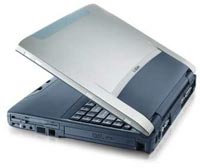 Wi-Fi usage has still a long way to go before it really catches on in the UK according to a new survey carried out by Toshiba.
Wi-Fi usage has still a long way to go before it really catches on in the UK according to a new survey carried out by Toshiba. These figures seem in stark contrast to our recent
These figures seem in stark contrast to our recent  Not surprisingly, a fear of someone swiping their laptop played a big part in people’s reluctance to whip out the Wi-Fi (25%) as did privacy fears (27%).
Not surprisingly, a fear of someone swiping their laptop played a big part in people’s reluctance to whip out the Wi-Fi (25%) as did privacy fears (27%). With a high-end feature set offering auto, scene, aperture and shutter priority modes plus full manual exposure controls, Panasonic’s beautifully sculpted 8 megapixel LX1 is clearly aimed at the discerning photographer who knows their ISO from their f-stop.
With a high-end feature set offering auto, scene, aperture and shutter priority modes plus full manual exposure controls, Panasonic’s beautifully sculpted 8 megapixel LX1 is clearly aimed at the discerning photographer who knows their ISO from their f-stop.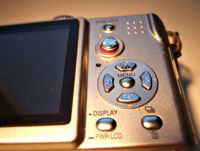 On most compact digcams, exposure adjustments are invariably achieved by fiddly excursions through endless sub-menus, but the LX1’s design affords fast, direct access to a host of vital functions like ISO rating, shutter speed, aperture and file size/quality – essential for those looking to capture the ‘decisive moment’.
On most compact digcams, exposure adjustments are invariably achieved by fiddly excursions through endless sub-menus, but the LX1’s design affords fast, direct access to a host of vital functions like ISO rating, shutter speed, aperture and file size/quality – essential for those looking to capture the ‘decisive moment’. Although some cameras mimic a 16:9 shooting ratio by cropping off the top and bottom of the picture, the LX1 has a true 16:9 sensor, with users able to switch formats via a handy switch on the lens barrel (no sub-menu burrowing needed).
Although some cameras mimic a 16:9 shooting ratio by cropping off the top and bottom of the picture, the LX1 has a true 16:9 sensor, with users able to switch formats via a handy switch on the lens barrel (no sub-menu burrowing needed). Camera controls
Camera controls Photographic modes
Photographic modes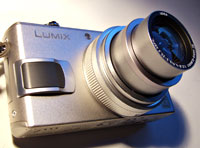 Of course, the capable image stabilisation goes some way to compensate for these serious shortcomings, allowing handheld longer exposures at low ISO ratings, but that’s going to be a dead loss if you’re trying to freeze action in low light.
Of course, the capable image stabilisation goes some way to compensate for these serious shortcomings, allowing handheld longer exposures at low ISO ratings, but that’s going to be a dead loss if you’re trying to freeze action in low light. Conclusion
Conclusion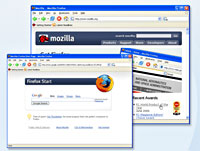 According to figures released by French Web metrics firm XiTi, the open source Mozilla Firefox browser has now grabbed a massive 20% average market share in Europe, creating a growing challenge to the current leader, Microsoft Internet Explorer.
According to figures released by French Web metrics firm XiTi, the open source Mozilla Firefox browser has now grabbed a massive 20% average market share in Europe, creating a growing challenge to the current leader, Microsoft Internet Explorer. Over here in Blighty, it seems that the Brits are yet to be wooed by the might of Mozilla, with the country recording one of the lowest proportions of Firefox users in Europe – just 11%.
Over here in Blighty, it seems that the Brits are yet to be wooed by the might of Mozilla, with the country recording one of the lowest proportions of Firefox users in Europe – just 11%.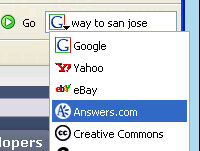 Other Web metrics companies have produced somewhat less spectacular estimates of Firefox’s market share, with OneStat.com reporting in November last year that the browser had notched up a global market share of 11.5%.
Other Web metrics companies have produced somewhat less spectacular estimates of Firefox’s market share, with OneStat.com reporting in November last year that the browser had notched up a global market share of 11.5%. In its submission this week to an MPs’ inquiry into Digital Rights Management (DRM), the influential National Consumer Council (NCC) spelt out its concern at current self-regulation, and called for new laws to ensure consumers’ rights to use digital content are protected.
In its submission this week to an MPs’ inquiry into Digital Rights Management (DRM), the influential National Consumer Council (NCC) spelt out its concern at current self-regulation, and called for new laws to ensure consumers’ rights to use digital content are protected. People are finding they can’t play the DVDs they’ve bought abroad or make compilations of material that they have purchased for their own use. The NCC believes that the use of DRM can and is already constraining the legitimate consumer use of digital content. It is also undermining consumers existing rights under consumer protection and data protection laws.
People are finding they can’t play the DVDs they’ve bought abroad or make compilations of material that they have purchased for their own use. The NCC believes that the use of DRM can and is already constraining the legitimate consumer use of digital content. It is also undermining consumers existing rights under consumer protection and data protection laws. Jill Johnstone, Director of Policy at NCC said; “Because of the current situation, consumers face security risks to their equipment, limitations on their use of products, poor information when purchasing products and unfair contract terms.
Jill Johnstone, Director of Policy at NCC said; “Because of the current situation, consumers face security risks to their equipment, limitations on their use of products, poor information when purchasing products and unfair contract terms.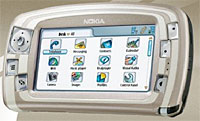 Two recent studies into mobile TV on 3G mobile phones have managed to produce rather inconclusive results concerning the willingness of the great British public to use the service and how much they’d be prepared to pay for it.
Two recent studies into mobile TV on 3G mobile phones have managed to produce rather inconclusive results concerning the willingness of the great British public to use the service and how much they’d be prepared to pay for it.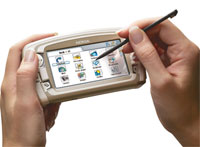 The feedback seemed back-slappingly reassuring, with 83 per cent of the triallists “satisfied” with the service, and 76 per cent indicating they’d be keen to take up the service within 12 months.
The feedback seemed back-slappingly reassuring, with 83 per cent of the triallists “satisfied” with the service, and 76 per cent indicating they’d be keen to take up the service within 12 months.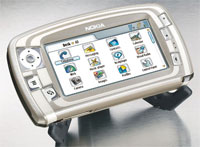 “This trial is further illustration that we are moving from a verbal only to a verbal and visual world in mobile communications,” said David Williams, O2’s technology chief.
“This trial is further illustration that we are moving from a verbal only to a verbal and visual world in mobile communications,” said David Williams, O2’s technology chief. BT has cut short its ambitious plans to transform phone boxes into interactive Internet gateways.
BT has cut short its ambitious plans to transform phone boxes into interactive Internet gateways.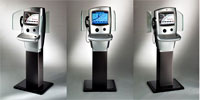 In a public statement BT said, “There are no immediate plans to reduce the base of public multimedia kiosks other than moving to locations with better revenue earning potential and agreeing moves with our managed site owners.”
In a public statement BT said, “There are no immediate plans to reduce the base of public multimedia kiosks other than moving to locations with better revenue earning potential and agreeing moves with our managed site owners.” With the continuing exponential growth in Internet-enabled mobile phones and Wi-Fi, we wouldn’t be surprised if we see some of these all-singing phone terminals disappearing sooner rather than later.
With the continuing exponential growth in Internet-enabled mobile phones and Wi-Fi, we wouldn’t be surprised if we see some of these all-singing phone terminals disappearing sooner rather than later.